There are lots of interesting new details in the new renderings of the B-21 stealth bomber.
The U.S. Air Force has just published three new renderings of the B-21 “Raider”, the U.S. Air Force’s next stealth bomber built by Northrop Grumman and destined to replace the B-1 and B-2 fleets.
In 2016, Air Force Secretary Deborah Lee James revealed the first artist rendering of the Long Range Strike Bomber designated the B-21, at the Air Force Association’s Air Warfare Symposium in Orlando, Florida, that showed a concept designed around a standard flying wing quite similar to the B-2’s rather than a “cranked kite” or a kite (like those seemingly spotted over the Wichita and Amarillo back in 2014).
While on Mar. 3, 2018, Brigadier General Carl Schaefer, Commander of the 412th Test Wing at Edwards Air Force Base, publicly announced that the aircraft would be tested at Edwards. The new bomber, that the U.S. Air Force plans to procure in 100 examples has a lot of things in common with the B-2; the main differences are the “W” shaped trailing edge of the Raider that is an evolution from the Spirit’s sawtooth trailing edge and the overall size and weight: the B-2’s wingspan is 172 feet while the B-21 has a payload requirement said to be between two thirds and half that of the B-2. That’s why the Raider will probably be lighter featuring a wing span smaller than that of the Spirit.
No other official renderings of the new aircraft were released since the first ones made public four years ago. Late last year, a computer-generated image created by artist Mike Tsukamoto for journalist John A. Tirpak’s December 1, 2019 article on the B-21 Raider in AirForceMag.com, titled, “The Raider Takes Shape” showed a plan-view comparison of the existing B-2 Spirit “parked” next to Tsukamoto’s digital rendering of the B-21.
Then today, the Air Force Global Strike Command shared on their Facebook page the new artist renderings of the B-21 Raider concept shown in hangars at the three locations where the nation’s newest stealth bomber will be housed: Dyess Air Force Base, Ellsworth Air Force Base and Whiteman Air Force Base.
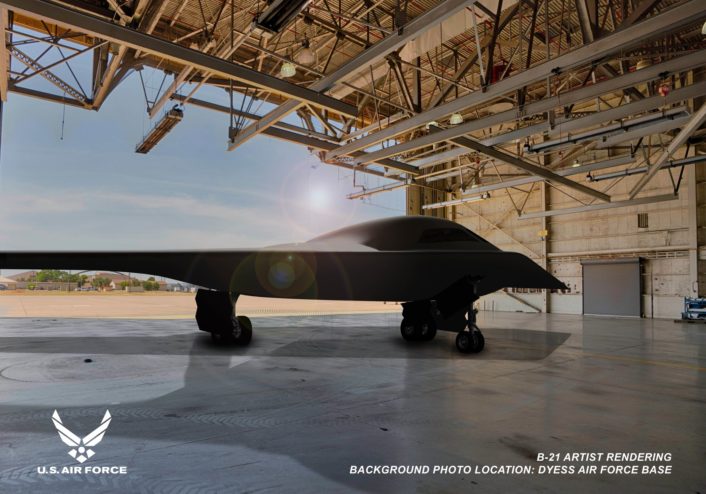
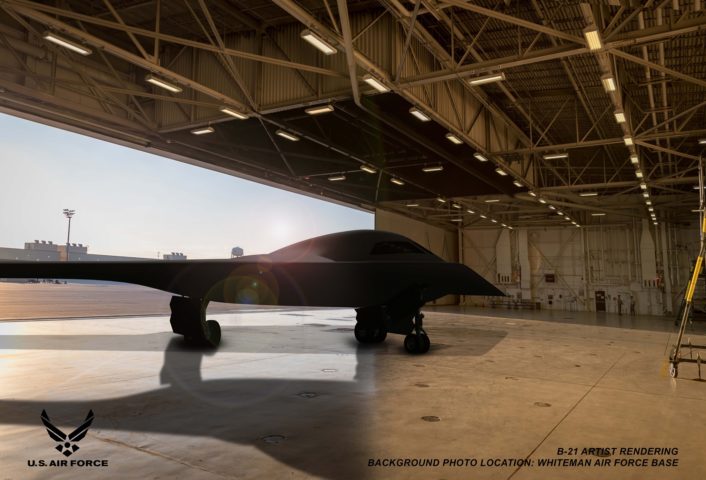
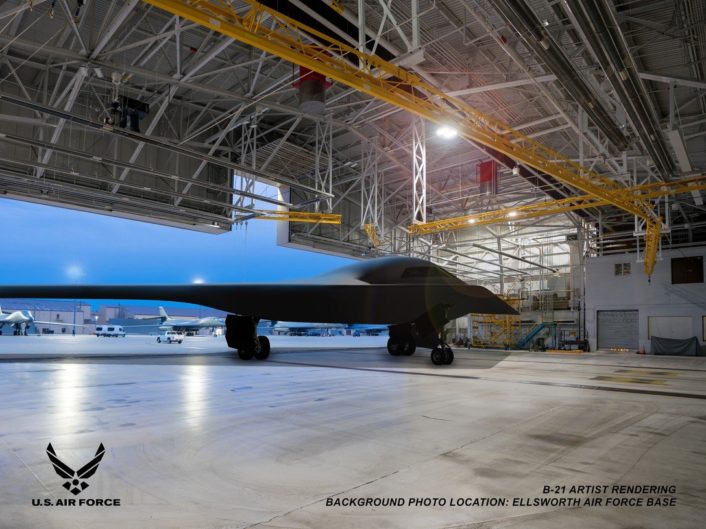
Although intentionally lacking many features, the new artworks are extremely interesting, as they enable the gathering of additional details. Here are those that seem to be more evident to me (I’d suggest you to read also the analysis Tyler Rogoway and Joseph Trevithick published at The War Zone here).
- Overall shape is similar to the one of the B-2 but the B-21 is smaller in size
- B-21 leading edge shows different design concept: in particular, the new aircraft does not appear to have the toothpick edge shape of its predecessor’s hence lacking also the peculiar B-2’s “hawk’s-beak” profile
- The B-21 features different inlets config and blended conformal engine nacelles
- The B-21 has a two-wheel MLG (Main Landing Gear)
- The MLG and Nose Gear doors are different: in particular, the MLG doors are not trapezoidal but show serrated edges whereas the nosegear door is serrated and not attached to the gear leg but on the right side of the bay.
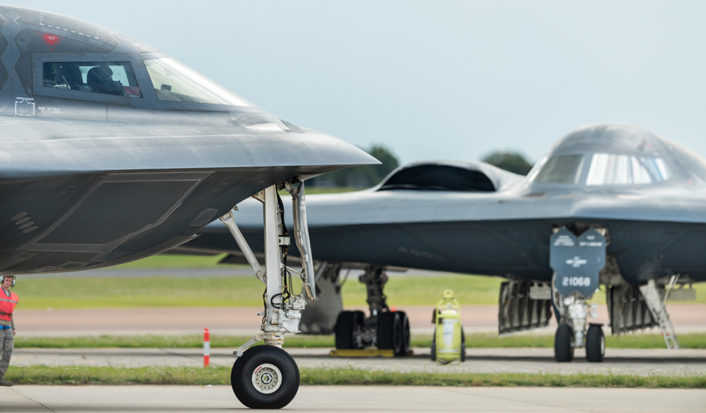
We’ve tried to summarize most of the details in the following image (that we’ve also edited to increase lighting). If you note something else, please let us know.
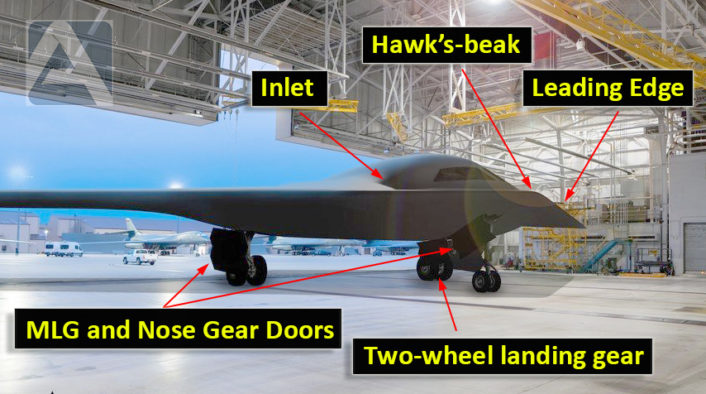
The new bomber is expected to perform its first flight in 2021. The USAF has only 19 operational B-2 Spirit stealth bombers. The aircraft are based at Whiteman AFB in Missouri and are sometimes forward-deployed as a strategic deterrent or for global precision strike missions that are not flown directly from Whiteman AFB.








